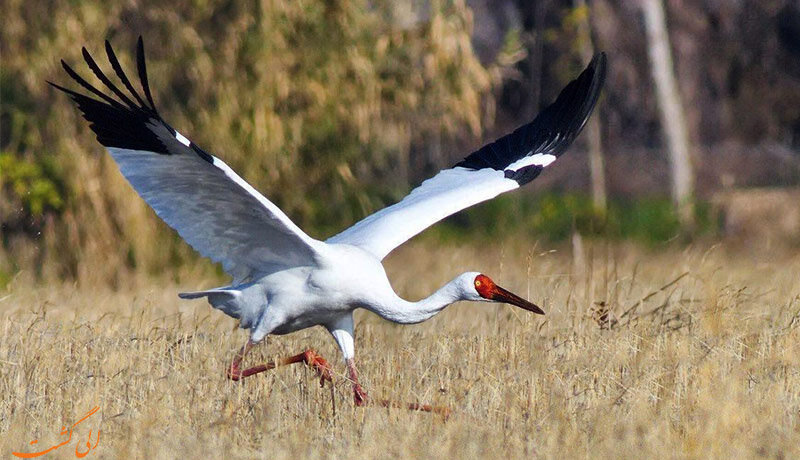Last Siberian crane embarks on his journey to Iran

TEHRAN – The last remaining western Siberian crane, called ‘Omid’ (meaning Hope in Persian), has returned to the northern Mazandaran province once again to winter like the past fourteen years, IRNA reported on Saturday.
The eye-catching snow-white bird has been taking wing to Iran for years in the first week of the Iranian calendar month of Aban falling in the last week of October.
For the past 14 years, the Siberian Crane has been taking a two-month incredible fly of 5,000km from Uvat in western Siberia to Fereydunkenar Damgah [structures built-in rice paddies for harvesting wild ducks in autumn and winter by farmers].
Initially, two other cranes also made the same trip but they were shot, leaving a sole traveler from the western Arctic population.
Despite losing his couple Arezoo (meaning Wish in Persian) seven years ago, he comes back to winter in the wetland every year ever since, except for two years during the past 14 years. Locals are very much fond of him and call him Omid as it brings hope with him.
Omid's annual trip to Mazandaran is very important for environmental and wildlife lovers, considering that it is the last survivor of the western Siberian cranes. This year, he arrived a week earlier.
According to the International Crane Foundation website, this critically endangered species is now only found in one main population in East Asia, with a few birds remaining in the historic Western/Central population.
The Eastern population breeds in northeastern Siberia and winters at Poyang Lake in the Lower Yangtze River Basin in China. In the Western/Central population, a single crane [Omid] continues to winter along the south coast of the Caspian Sea in Iran. This population is bred just south of the Ob River in Russia.
With a height of 140 centimeters and a weight of 6 kilograms, there are only 3,600 to 4,000 cranes left in the world. The Eastern population is stable, but the Western/Central population is almost extirpated.
Adult cranes have red skin on the forehead, face, and sides of the head, white plumage with black wingtips, and reddish-pink legs while juvenile cranes have a plumage mix of white and cinnamon-brown feathers and tan head.
The oldest documented crane was a Siberian Crane named Wolf, who died at the age of 83. Wolf is in the Guinness Book of World Records.
Habitat loss, especially due to changing hydrology caused by water diversions and conversion of wetlands, illegal take including hunting, trapping and poisoning, pollution, and environmental contamination is threatening this endangered species.
FB/MG
Leave a Comment